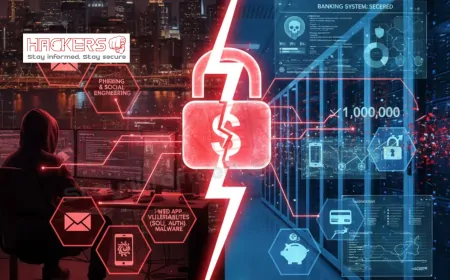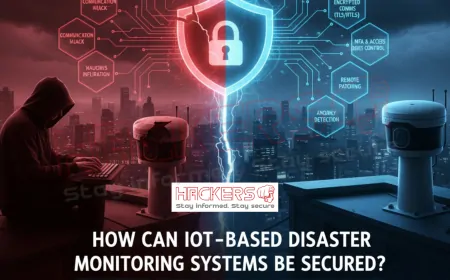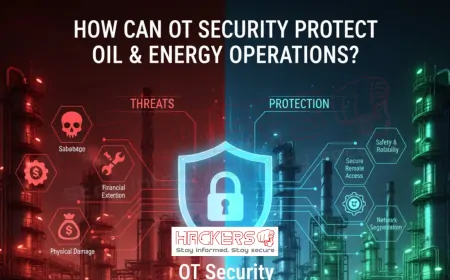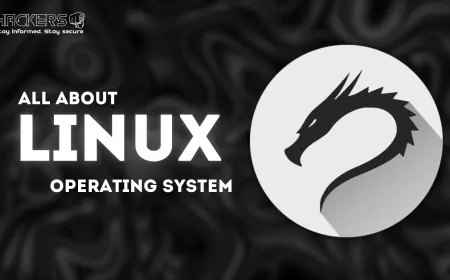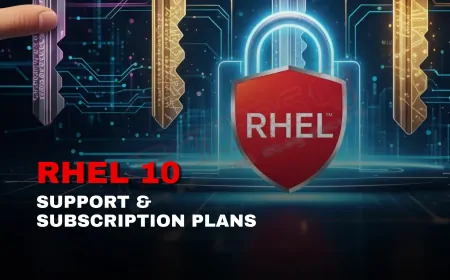What Are the Top Security Tools Used to Protect Energy Infrastructure?
Imagine a silent war being fought every second, not with guns or bombs, but with lines of code. Deep inside the control rooms of power plants, oil refineries, and gas pipelines, digital defenders stand guard. Their weapons? Not tanks or missiles, but software tools that detect intruders, block attacks, and sound alarms before disaster strikes. Energy infrastructure, the lifeblood of modern civilization, is under constant threat from hackers, nation-states, and cybercriminals. A single breach can black out cities, spill oil, or halt fuel supply. But there is hope. A powerful arsenal of security tools protects these critical systems. In this blog post, we will walk through the top tools used by energy companies worldwide to secure power grids, SCADA systems, and industrial control environments. We will explain what each tool does, why it matters, and how it fits into a complete defense strategy. No deep technical knowledge required, just a desire to understand how we keep the lights on in a dangerous digital world.

Table of Contents
- Why Security Tools Are Essential for Energy
- Network Security Tools
- Endpoint and Device Protection
- Monitoring and Detection Tools
- Identity and Access Management
- ICS-Specific Security Solutions
- Incident Response and Recovery
- Comparison of Top Tools
- Best Practices for Using These Tools
- The Future of Energy Cybersecurity Tools
- Conclusion
Why Security Tools Are Essential for Energy
Energy systems are different from regular IT. They use Operational Technology (OT), which controls physical equipment like turbines, valves, and circuit breakers. A virus that slows down your laptop is annoying. The same virus in a power plant can cause explosions. Traditional antivirus software is not enough. Energy needs specialized tools that understand industrial protocols, tolerate 24/7 uptime, and detect subtle anomalies. These tools work together like layers of a fortress: firewalls block entry, sensors watch for intruders, and alarms alert guards. No single tool stops every attack, but the right combination makes breaches much harder.
Network Security Tools
The first line of defense is the network. These tools control what enters and leaves the system.
Next-Generation Firewalls (NGFW)
Traditional firewalls only look at IP addresses and ports. NGFWs go deeper. They inspect packet content, block malicious traffic, and understand SCADA protocols like Modbus or DNP3.
- Palo Alto Networks: Used by major utilities for deep packet inspection.
- Fortinet FortiGate: Popular in oil and gas for high-speed filtering.
- Cisco Firepower: Integrates with existing Cisco network gear.
Industrial Demilitarized Zones (DMZs)
A DMZ is a buffer zone between the corporate IT network and the OT control network. It allows safe data sharing without direct access. Tools like the Claroty xDome or Nozomi Guardian help build and monitor DMZs.
Virtual Private Networks (VPNs)
Remote engineers need secure access. VPNs encrypt connections. OpenVPN and Cisco AnyConnect are widely used with multi-factor authentication (MFA).
Endpoint and Device Protection
Every controller, sensor, and workstation is an endpoint. These tools protect individual devices.
Endpoint Detection and Response (EDR)
EDR tools watch for suspicious behavior, not just known viruses. They can isolate infected devices instantly.
- CrowdStrike Falcon: Lightweight, cloud-based, used in nuclear plants.
- Microsoft Defender for Endpoint: Integrates with Windows-based HMI systems.
- Dragos Platform: Built specifically for OT environments.
Application Whitelisting
Only approved programs can run. This stops ransomware cold. Carbon Black and McAfee Application Control are leaders in energy.
USB Control Tools
Many attacks start with infected USB drives. Tools like Opswat MetaDefender Kiosk scan and sanitize USBs before use.
Monitoring and Detection Tools
Prevention is good, but detection is critical. These tools watch for signs of trouble.
Security Information and Event Management (SIEM)
SIEM collects logs from all devices and uses AI to spot patterns. A sudden login at 3 a.m. from overseas? Alert.
- Splunk: Used by 70 percent of Fortune 100 energy firms.
- IBM QRadar: Strong in compliance reporting.
- Elastic Security: Open-source option for smaller utilities.
Network Traffic Analysis (NTA)
NTA tools passively monitor traffic without slowing systems. They baseline normal behavior and flag deviations.
- Nozomi Networks Guardian: Top choice for SCADA visibility.
- Claroty Continuous Threat Detection: Maps assets and detects anomalies.
Intrusion Detection Systems (IDS/IPS)
IDS watches. IPS blocks. Snort (open-source) and TippingPoint are common in substations.
Identity and Access Management
Who is allowed where? These tools ensure only the right people get in.
Multi-Factor Authentication (MFA)
Password plus phone code or biometric. Duo Security and Okta integrate with SCADA login screens.
Privileged Access Management (PAM)
Admins have powerful accounts. PAM tools like CyberArk and BeyondTrust record sessions and rotate passwords automatically.
Role-Based Access Control (RBAC)
Operators see controls. Accountants see billing. Tools like SailPoint enforce this.
ICS-Specific Security Solutions
Generic IT tools fail in OT. These are built for industrial environments.
Asset Discovery and Inventory
You cannot protect what you cannot see. Armis and Tenables OT Security map every device, even legacy ones without agents.
Protocol-Aware Firewalls
Understands DNP3, IEC 61850, and blocks invalid commands. Waterfall Security offers unidirectional gateways for ultimate safety.
OT Patch Management
Patching OT is risky. Tools like Industrial Defender test patches in virtual environments first.
Incident Response and Recovery
When an attack happens, speed matters. These tools help contain and recover.
Digital Forensics
EnCase and Autopsy analyze infected systems without spreading malware.
Backup and Restore
Air-gapped, immutable backups. Veeam and Rubrik protect SCADA configurations.
Orchestration and Automation
ServiceNow and Palo Alto Cortex XSOAR automate playbooks: isolate, alert, restore.
Comparison of Top Tools
| Tool Name | Category | Key Feature | Best For |
|---|---|---|---|
| Nozomi Networks Guardian | NTA / Visibility | Passive SCADA monitoring | Power grids, substations |
| Claroty xDome | Secure Remote Access | Zero-trust access | Remote engineers |
| Dragos Platform | Threat Hunting | OT-specific playbooks | Large utilities |
| Palo Alto Cortex XDR | EDR / XDR | AI-driven detection | Mixed IT/OT environments |
| Waterfall Unidirectional Gateway | Data Diode | One-way data flow | Nuclear, high-security sites |
Best Practices for Using These Tools
Tools only work if used correctly.
- Segment networks: Keep IT and OT separate
- Update regularly: But test patches in labs first
- Monitor 24/7: Use a Security Operations Center (SOC)
- Train staff: Run phishing and USB drills
- Document everything: For compliance and forensics
- Work with vendors: Ensure tools support your protocols
- Test backups: Restore in simulations
The Future of Energy Cybersecurity Tools
Tomorrow’s tools will be smarter and faster.
- AI and Machine Learning: Predict attacks before they happen
- Zero Trust Architecture: Verify every user and device
- Quantum-Safe Encryption: Protect against future quantum computers
- Digital Twins: Test attacks on virtual grids
- Blockchain for Supply Chain: Verify software updates
Conclusion
Energy infrastructure is not defenseless. A powerful set of security tools stands ready: firewalls that understand industrial languages, sensors that see invisible threats, and systems that respond in seconds. From Nozomi’s passive monitoring to Waterfall’s unbreakable data diodes, these tools form a layered shield around power plants, pipelines, and grids. But technology alone is not enough. It requires skilled people, clear processes, and constant vigilance. The best defense combines the right tools with the right mindset. As cyber threats evolve, so must our defenses. The future of energy security depends on investing in these tools today, training tomorrow’s guardians, and never underestimating the enemy at the gate. Because when the lights stay on, civilization keeps moving.
What is the difference between IT and OT security?
IT secures data and office systems. OT secures physical processes like power generation and valve control. OT tools prioritize safety and uptime.
Can regular antivirus protect a power plant?
No. It may slow systems or block legitimate controls. OT needs lightweight, whitelisting-based protection.
What is a data diode?
A hardware device that allows data to flow one way only. It physically prevents attacks from entering critical systems.
Why is network segmentation important?
It stops a breach in email systems from reaching turbine controls. Think of it as locked doors between rooms.
What does SIEM stand for?
Security Information and Event Management. It collects logs and finds threats across all systems.
Is open-source software safe for energy?
Yes, if well-maintained. Tools like Snort and Elastic are trusted in critical environments.
Can USBs really infect a power grid?
Yes. Stuxnet spread via USB. Scanning and whitelisting USBs is now standard.
What is zero trust in energy?
Never trust, always verify. Every user and device must prove identity, even inside the network.
Do small utilities need these tools?
Yes. Attackers target weak links. Cloud-based, affordable options now exist for smaller players.
How often should tools be updated?
Monthly for signatures, quarterly for major versions. Always test in a lab first.
What is passive monitoring?
Watching network traffic without interfering. Ideal for OT where active scanning can crash systems.
Can AI replace human analysts?
No. AI flags issues fast, but humans investigate context and make final calls.
What is a digital twin in cybersecurity?
A virtual copy of a power plant used to test attacks and tools safely.
Are cloud tools safe for OT?
Yes, if air-gapped or using secure tunnels. Hybrid cloud is common now.
What is whitelisting?
Only allowing approved programs to run. It blocks ransomware and unknown malware.
Who uses Dragos?
Major utilities, oil companies, and governments. It is built by ex-NSA OT experts.
Can tools prevent nation-state attacks?
Not fully, but they delay and detect. Early warning gives time to respond.
What is the cost of these tools?
From $50,000 for small sites to millions for national grids. But downtime costs far more.
Do tools work during blackouts?
Many run on battery or generators. Redundant systems ensure monitoring continues.
How do I choose the right tool?
Map your assets, assess risks, test in a pilot, and ensure vendor supports your protocols.
What's Your Reaction?
























